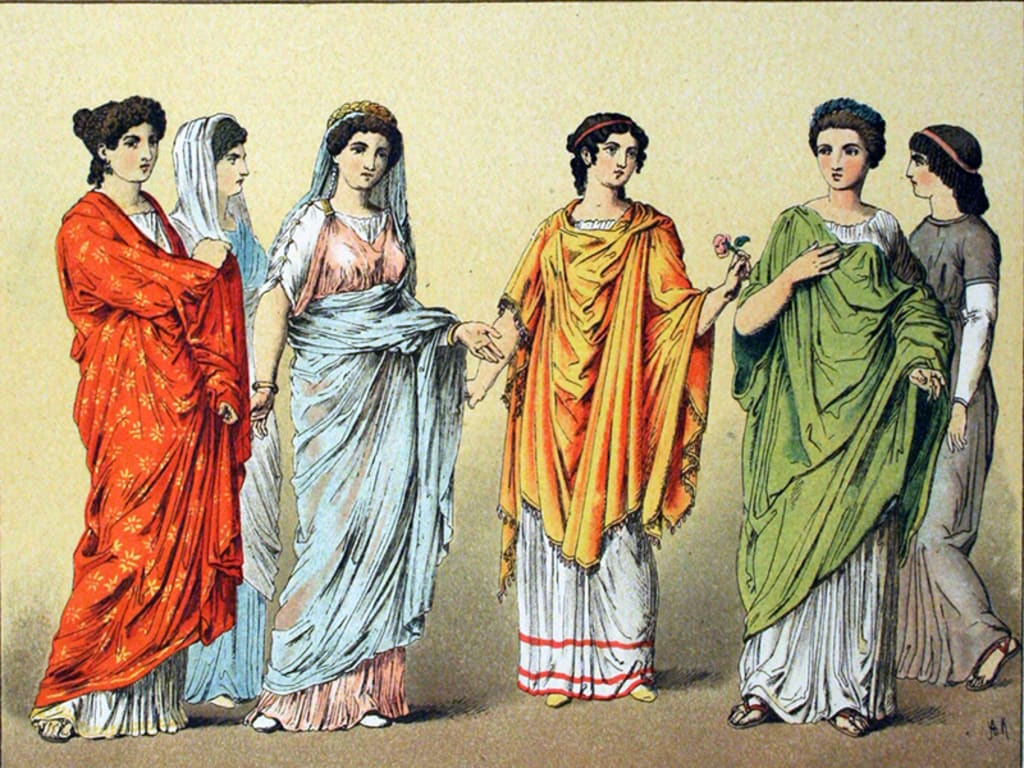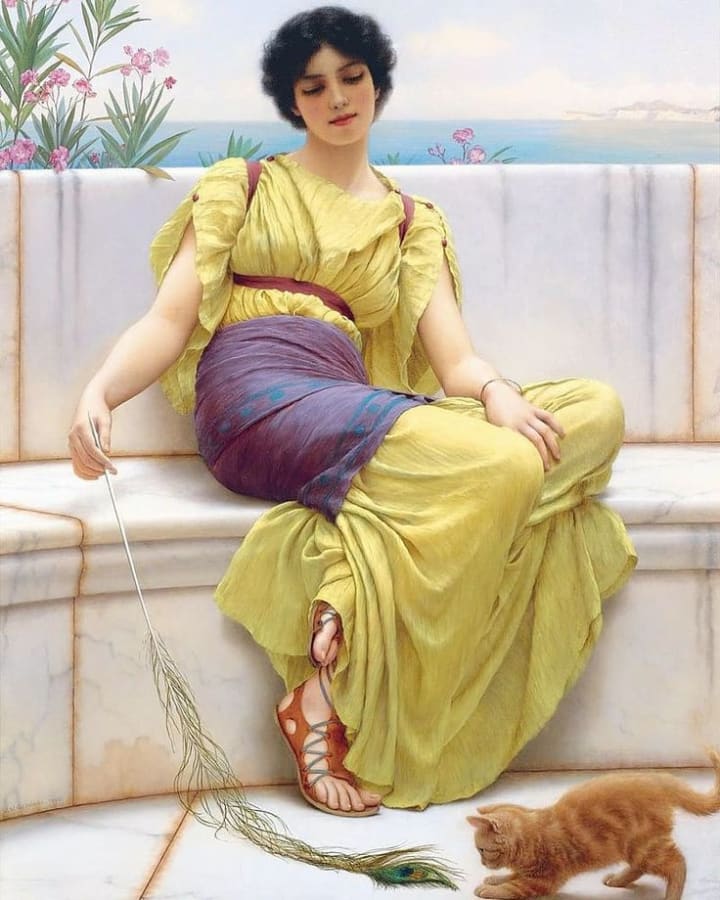Women's Clothing in Ancient Rome
Elegance and Tradition in the Roman Empire

Introduction
Fashion in ancient Rome was a reflection of the society and culture of that time, particularly when it came to women's clothing. Roman women were known for their elegance and sophistication, wearing garments that reflected their social status and position in the Roman social hierarchy.
Main Fashion Trends
Roman women primarily wore two types of clothing: the stola, reserved for married women, and the toga, reserved for unmarried women. The stola was a long and embellished garment, typically in white, worn over a tunic. It was a symbol of respectability and modesty for married women. The toga, on the other hand, was a large, draped garment made of a single piece of fabric. It was worn as a sign of citizenship and was associated with formal and public occasions.
The stola itself had various variations, with some styles featuring embroidered borders or pleats. The toga, although mainly worn by men, was occasionally worn by women of higher status for special events. It required a particular folding technique, known as the "toga fold," which could be quite intricate and time-consuming.
Noteworthy Details
An interesting detail is that the color of Roman women's clothing often indicated their social status. Women of high rank and wealth would wear garments in vibrant and expensive colors such as purple, red, or gold. These colors were expensive to produce and dye, thereby highlighting the wearer's wealth and social standing. In contrast, women from lower classes would opt for more subdued colors like white, gray, or earth tones.
In addition to colored garments, Roman women also adorned their clothing with various accessories. Jewelry played a significant role in completing their look. They would wear intricately designed necklaces, bracelets, earrings, and rings made from precious metals like gold or silver, often embellished with gemstones and pearls. These accessories not only showcased their wealth but also added a touch of elegance and personal style to their attire.
Fascinating Anecdotes
One intriguing story involves the Vestal Virgins, an order of priestesses dedicated to the goddess Vesta. The Vestal Virgins were highly revered in Roman society and played a vital role in religious ceremonies. As part of their dress code, they were allowed to wear the toga praetexta, a garment usually reserved for high-ranking officials and magistrates. This represented their elevated position within the social hierarchy and their commitment to their religious duties.
Another interesting anecdote revolves around the empress Livia, wife of Emperor Augustus. Livia was known for her sense of style and fashion, setting trends that influenced Roman women's clothing. She favored simple and elegant garments in subdued colors, often adorned with exquisite details and embroidery. Her fashion choices were emulated by other women in Roman society, solidifying her status as a fashion icon of her time.
Conclusion
Examining women's clothing in ancient Rome provides us with a fascinating insight into the daily lives, social conventions, and fashion trends of that era. Roman women's attire was not only a means of practicality but also a form of self-expression, a display of wealth, and a reflection of societal norms. The stola and toga were distinct garments that symbolized the marital status and social standing of women. The use of color, intricate designs, and jewelry further enhanced their ensembles, creating an exquisite and visually striking appearance.
Beyond the fabric and accessories, women's clothing in ancient Rome was an integral part of their identity and societal roles. It reflected their adherence to traditional values, cultural practices, and religious beliefs. The clothing choices made by influential figures such as the Vestal Virgins and Livia left a lasting impact on fashion trends and the perception of feminine beauty.
By exploring the fashion of women in ancient Rome, we gain a profound understanding of the convergence of art, culture, and social dynamics that shaped one of history's most remarkable civilizations. Fashion in ancient Rome goes beyond mere garments; it is a gateway to the stories, traditions, and aspirations of a vibrant society.

About the Creator
Maria Gagliardi
I'm Maria, a university student with a passion for the written word. I find my sanctuary within the pages of books. Here on Vocal media, I hope to find the perfect platform to lend my voice to my ideas
Enjoyed the story? Support the Creator.
Subscribe for free to receive all their stories in your feed. You could also pledge your support or give them a one-off tip, letting them know you appreciate their work.





Comments
There are no comments for this story
Be the first to respond and start the conversation.